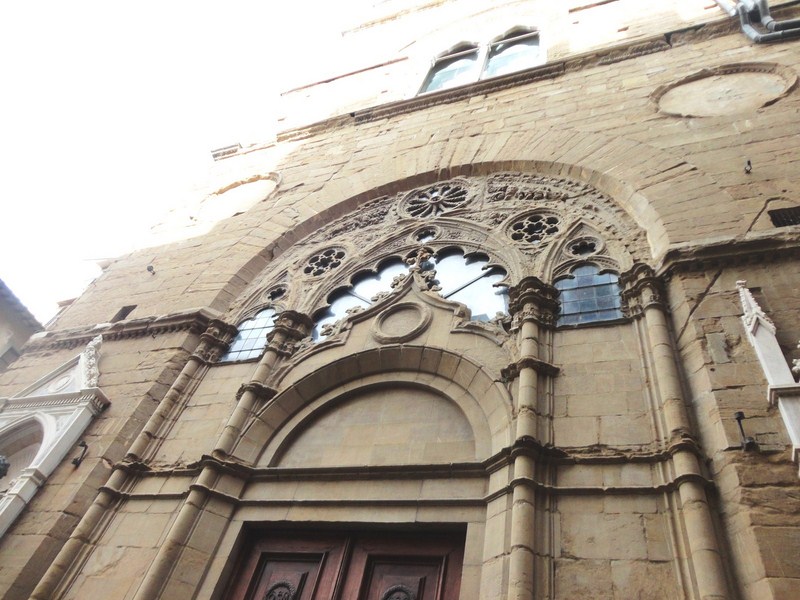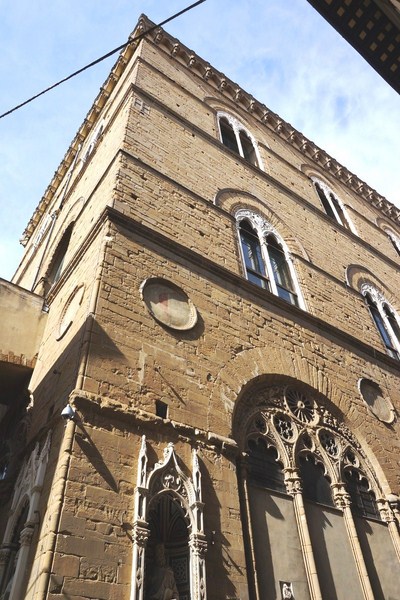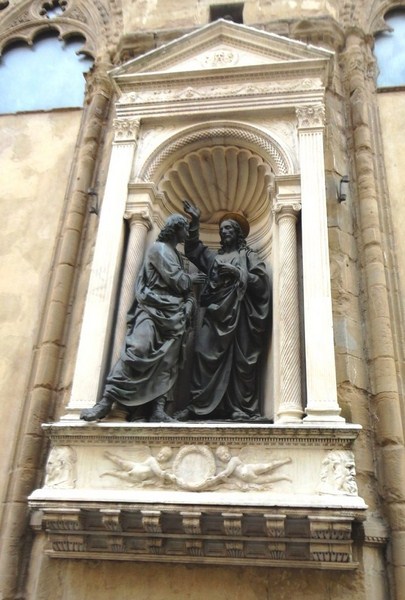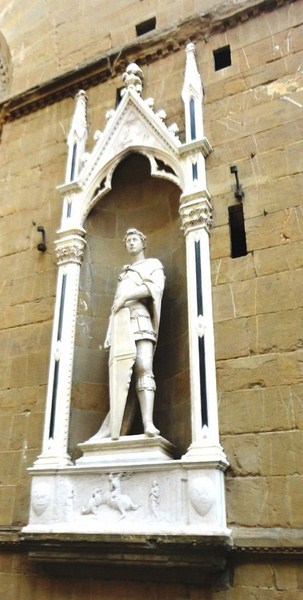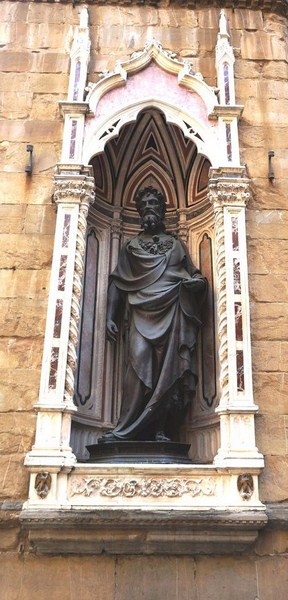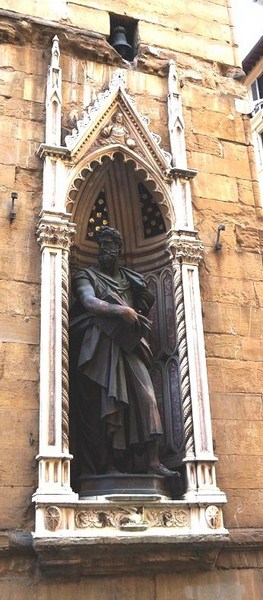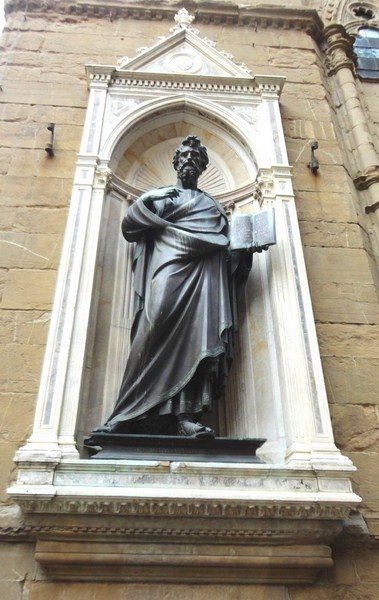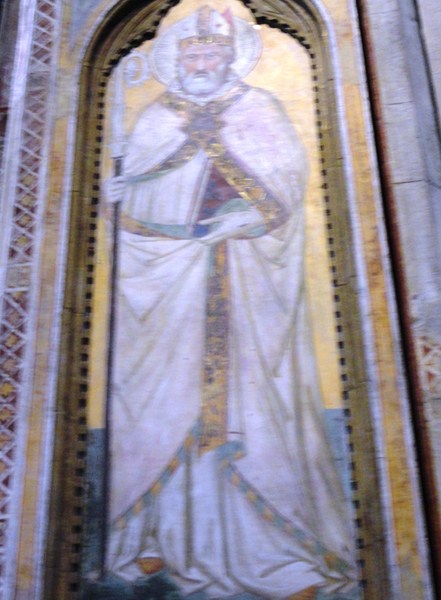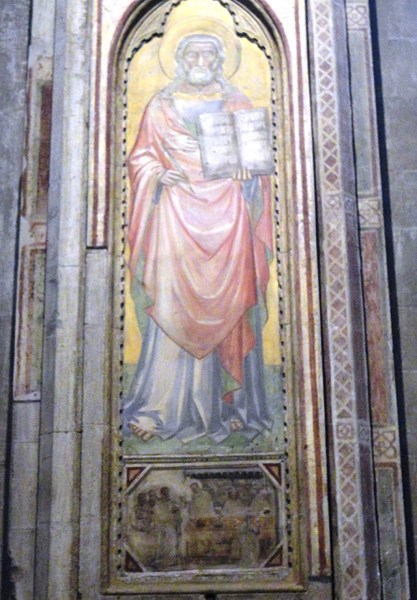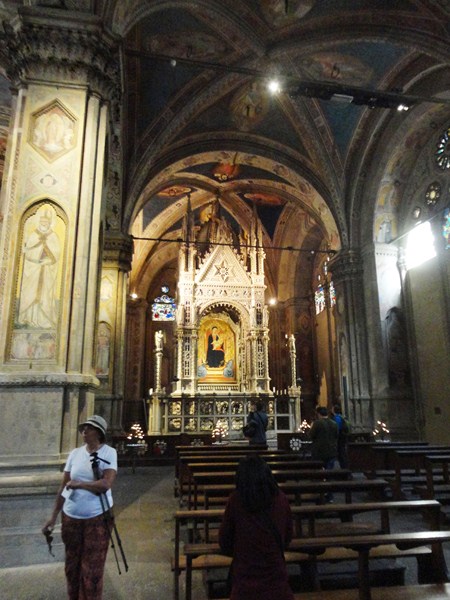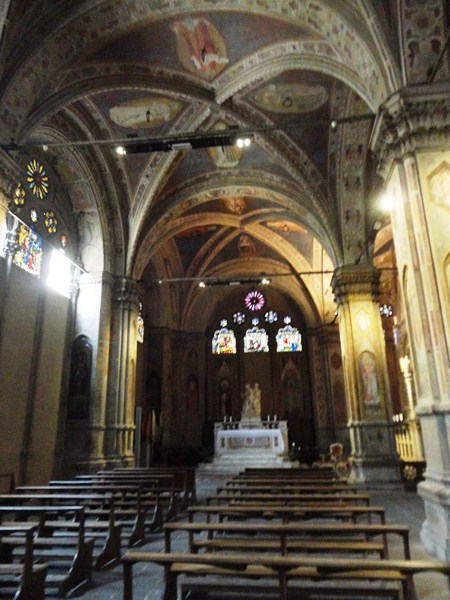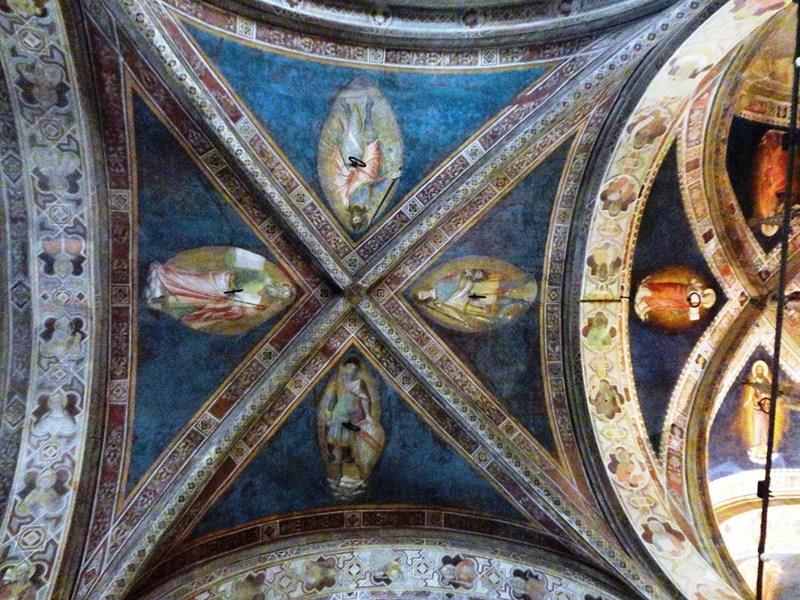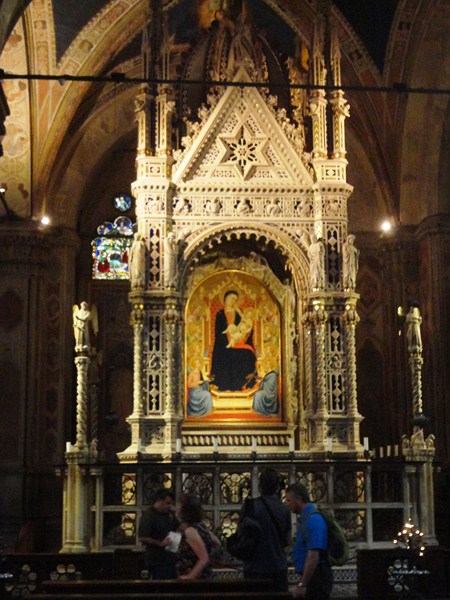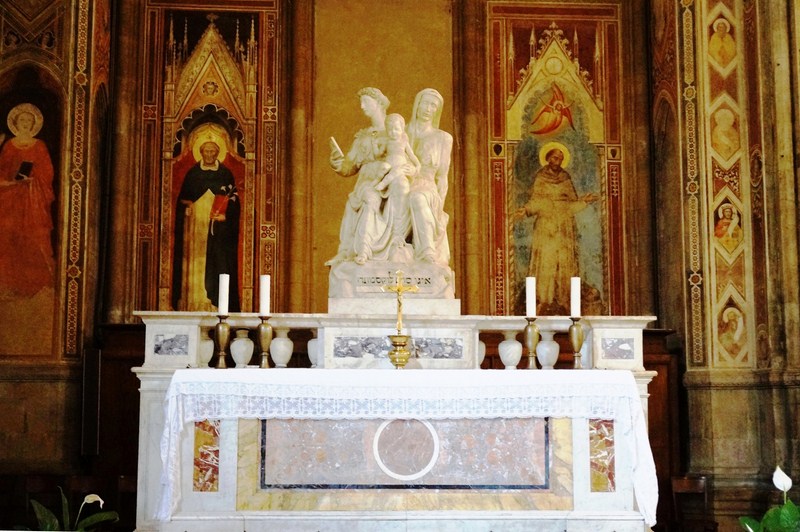The square Orsanmichele Church was constructed on the site of the now gone kitchen garden of the Benedictine monastery of San Michele (from the contraction of “Kitchen Garden of St. Michael” in Tuscan dialect of the Italian word orto.
It was originally built in 1337 as a grain market (chutes for the wheat are still to be seen inside the piers) by architects Simone di Francesco Talenti, Neri di Fioravante and Benci di Cione and finished in 1349. Between 1380 and 1404, the loggia was closed in and designed (by Francesco Talenti) and converted into a chapel of Florence’s powerful craft and trade guilds.
The lower level façade was embellished with 14 architecturally designed external niches (originally 13th-century arches that originally formed the loggia of the grain market) which were filled, from 1399 to around 1430, with statues of the guild’s patron saints. The statues of the three richest guilds were made in more costly bronze (approximately ten times the amount of the stone figures).
The tabernacles around the outside, from the foremost Florentine Renaissance artists of the 15th (Nanni di Banco, Lorenzo Ghiberti, Andrea del Verrocchio, Donatello) and 16th century (Giambologna), were assigned to the principal guilds (Arti Maggiori), the medium guilds (Mediane) and to the guild of the Armorers and Swordmakers.
Those guilds which did not have the privilege of an external tabernacle had their patron saint depicted in fresco or on panel inside the building. The most important tabernacle, in the center of the façade, facing Via de’ Calzaioli, was assigned first to the Parte Guelfa and then to the Tribunal of the Mercatanzia. The tabernacles are:
- St. Peter by Donatello
- St. Philip by Nanni di Banco
- Four Crowned Saints group by Nanni di Banco
- St. George (1417) by Donatello
- St. Matthew by Lorenzo Ghiberti
- St. Stephan by Lorenzo Ghiberti
- St. Eligius by Nanni di Banco
- St. Mark by Donatello
- St. Jacob by Niccolò di Piero Lamberti (?)
- Madonna della Rosa by Govanni di Piero Tedesco (?)
- John the Evangelist by Baccio da Montelupo
- St. Luke by Gianbologna
- Incredulity of St. Thomas (1467-83) by Andrea del Verrocchio, replacing Louis of Toulouse (1433) by Donatello
- St. John the Baptist by Lorenzo Ghiberti
The sculptures seen today are modern duplicates. To protect them from the elements and vandalism, many of the original sculptures have been removed to the museum of Orsanmichele at the upper floor of the church. Statues of St. George (and its niche) and St. Louis of Toulouse, both works by Donatello, are in the Bargello Museum (moved in 1892) and in the Museum of Santa Croce of the Basilica di Santa Croce respectively.
The façade also has elegant mullioned windows, in the Late Gothic style, and stained glass by Niccolò di Pietro Gerini showing Scenes and miracles of the Virgin (1395-1405).
The almost intact but atmospherically gloomy Late Gothic interior, with its square layout and piers (their positioning recalls the arrangement of the original open loggia) features the monumental marble altar, with Virtues and scenes from the life of the Virgin in relief, not in the center but to the right.
The bejeweled Gothic tabernacle encases a repainting, by Bernardo Daddi, of an older icon of the Madonna and Child (1346), known as the Madonna delle Grazie. It was commissioned in 1355, a year after the terrible plague, from Andrea Orcagna (Andrea di Cione), but not finished until 1359.
To the left of the nave is the votive altar of St. Anne, built in 1379 by order of the Signoria, with a marble group of St. Anne, the Virgin and Child by Francesco da Sangallo (c. 1526). On the walls there are patchy traces of frescoes that depict the patron saints of the various guilds.
Orsanmichele Church: Via dell’Arte della Lana, corner with Via Calzaiouli 50122 Florence, Italy. Tel: +39 055 23885. Admission: free. The Museum of the Orsanmichele (Museo di Orsanmichele), reached by the bridge from the adjacent Palazzo dell’Arte della Lana, is open every Monday.

